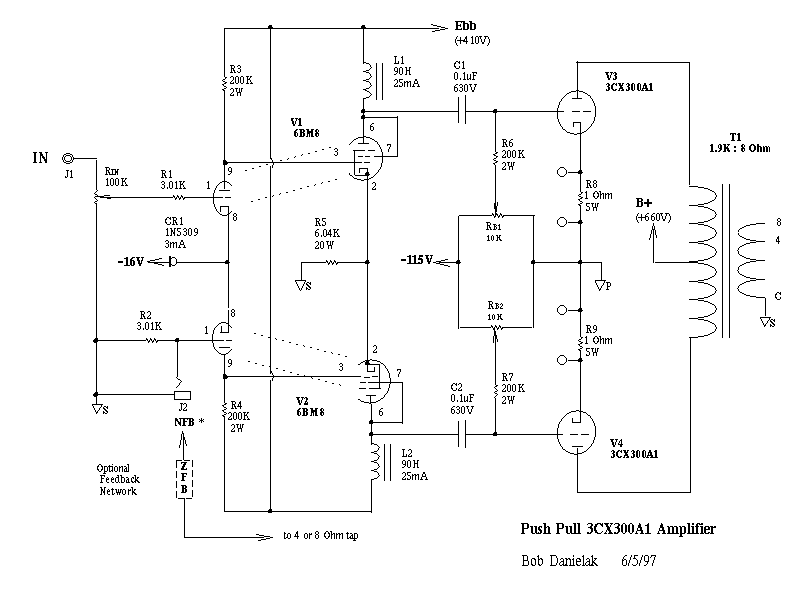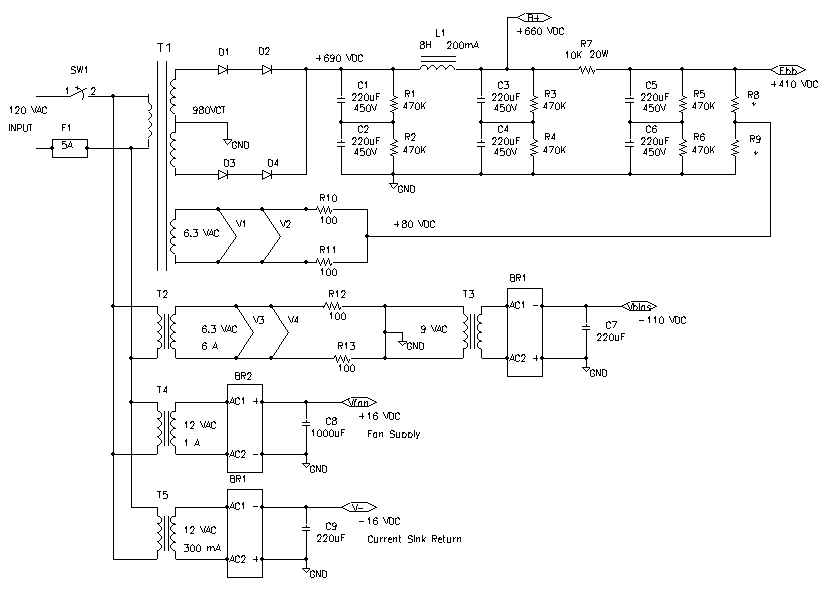

| Pout | 123W |
| Plate Dissipation | 90W/tube max. signal (Class AB) |
| Power Consumption | 300W |
| Pout | 100W |
| Plate Dissipation | 54W/tube quiescent (Class A) |
| Power Consumption | 200W |
| Pout | 110W (90Vpp into 9.2ohms resistive at clipping) |
| Overall Gain | approx 40dB (100X) |
| Driver Gain | approx 46dB (200X) |
| Input sensitivity | approx 0.1Vrms (0.3V peak) |
| Pout | 87W (80Vpp into 9.2ohms resistive at clipping) |
| Overall Gain | approx 37dB (70X) |
| Driver Gain | approx 46dB (200X) |
| Input sensitivity | approx 0.1Vrms (0.3V peak) |